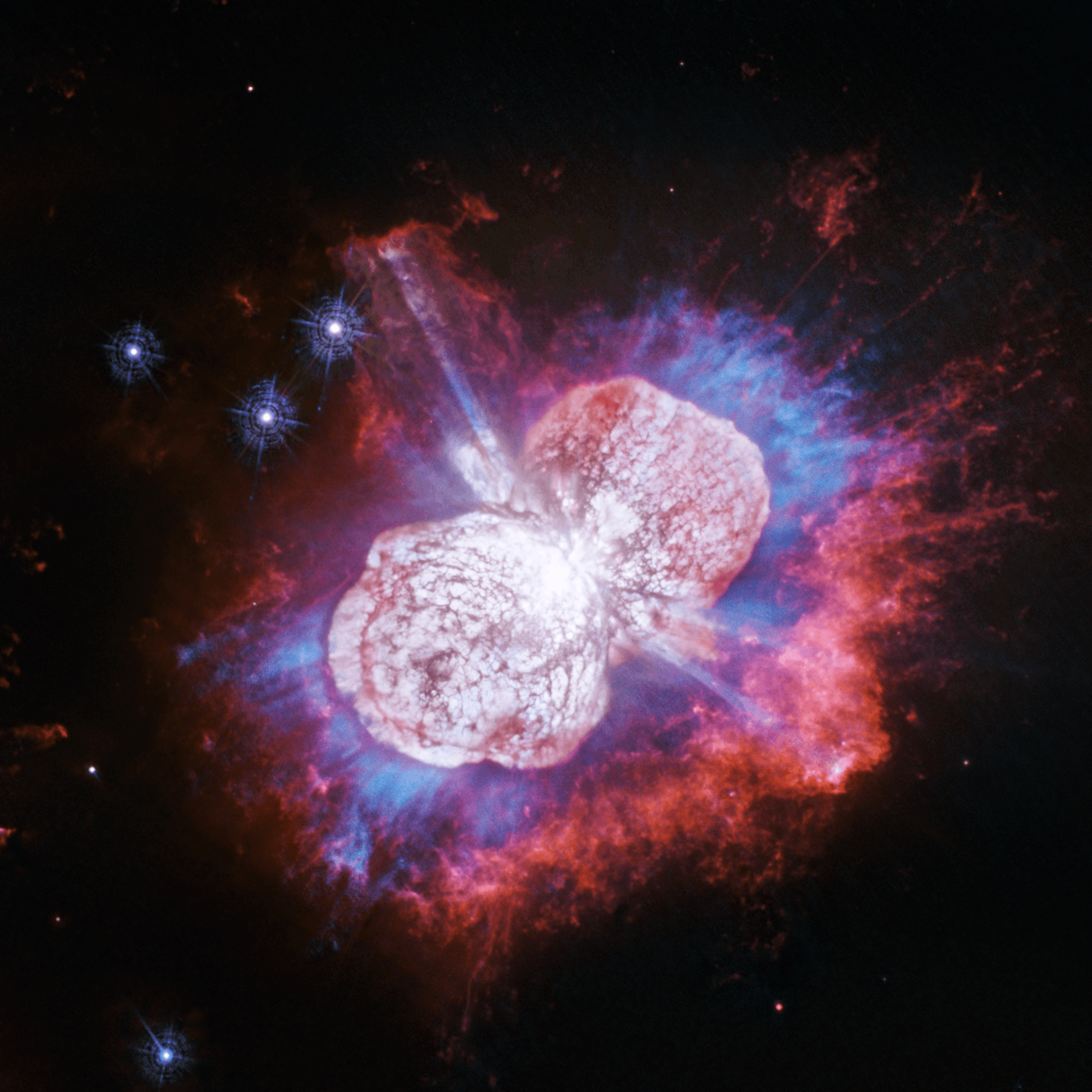To celebrate Independence Day in the United States, NASA published images of some impressive intergalactic fireworks. The beautiful imagery was captured by NASA’s Hubble Space Telescope.
Hubble had a tough task to take images of a star that is exploding. The exploding star that caused the intergalactic fireworks is called Eta Carinae, and it’s located 7,500 light-years away from Earth. Its explosion is flattered by gases in different colors, including red, white and blue.
“We’ve discovered a large amount of warm gas that was ejected in the Great Eruption but hasn’t yet collided with the other material surrounding Eta Carinae,” Hubble Lead Investigator Nathan Smith explained in a statement. “Most of the emission is located where we expected to find an empty cavity. This extra material is fast, and it ‘ups the ante’ in terms of the total energy for an already powerful stellar blast.”
This is not the first time Eta Carinae has displayed intergalactic fireworks. In fact, this event dates back to the 1840s when the star experienced a phenomenon called a “titanic outburst called the Great Eruption,” which made it the second-brightest star. Its glow was visible from Earth for over 10 years.
“Eta Carinae, in fact, was so bright that for a time it became an important navigational star for mariners in the southern seas,” NASA said.
However, the star has faded since then and became barely visible with the naked eye. Scientists used nearly every instrument on Hubble to learn more about it over the past 25 years. So far they have learned that it likely weighed more than 150 suns and that it’s on the brink of death. Scientists studied the star with both visible and infrared lights. However, the new observations with ultraviolet light gave the intergalactic fireworks a new look.
“We’re excited by the prospect that this type of ultraviolet magnesium emission may also expose previously hidden gas in other types of objects that eject material, such as protostars or other dying stars,” Smith said. “Only Hubble can take these kinds of pictures.”
The newly-discovered gas from the star using ultraviolet lights may help scientists understand what caused the star to explode, creating the intergalactic fireworks. It’s likely that the star will soon become a supernova, but researchers added that this event may have already happened, and the light from the supernova may not have reached Earth yet.





